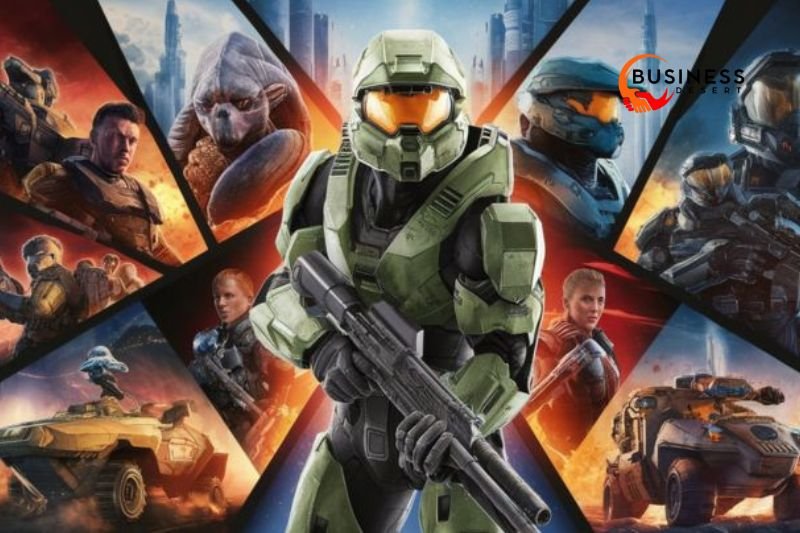Halo (2003) Game Icons Banners is not just a video game; it’s a cultural phenomenon that transformed the landscape of gaming. Released as a launch title for the original Xbox, it introduced players to a rich universe filled with intriguing characters, epic battles, and iconic visuals. One of the most captivating aspects of Halo is its iconography, which plays a crucial role in creating an immersive experience for players. Icons and banners within the game do more than serve as decoration; they convey essential information and enhance the storytelling aspect of gameplay.
Halo’s visual elements help establish a unique identity, making it easily recognizable among gamers and beyond. The game’s icons, including symbols of factions and character representations, communicate complex ideas at a glance, allowing players to engage more deeply with the game world. Furthermore, the banners used in various modes create a sense of excitement and anticipation, setting the stage for the adventures that await. Understanding these visuals is key to appreciating Halo’s impact on the gaming industry and its lasting legacy.
Table of Contents
Key Game Icons in Halo (2003)
In Halo (2003) Game Icons Banners play a pivotal role in creating an engaging experience for players. Among these, the Master Chief’s helmet stands out as the most iconic symbol of the franchise. This emblem represents not just the protagonist but also the spirit of heroism and determination that players associate with the character. Alongside this are the Covenant symbols, which signify the alien forces opposing the player. Each faction within the Covenant has its unique insignia, adding depth to the game’s lore and helping players quickly identify friend from foe. Additionally, the UNSC logo represents the human military forces and serves as a constant reminder of the struggle for survival against overwhelming odds. Collectively, these icons create a visual language that enhances gameplay, enabling players to navigate the complex world of Halo more intuitively.
The Role of Banners in Halo (2003)
Halo (2003) Game Icons Banners serve multiple purposes, enriching both the narrative and gameplay experience. In multiplayer modes, team banners are crucial for identifying alliances, with the classic red versus blue scheme allowing players to instantly recognize their teammates and adversaries. This color-coding fosters a sense of camaraderie among players, heightening the competitive spirit. In the campaign mode, mission banners set the tone for each adventure, providing players with a visual cue that hints at the challenges to come. These banners often feature stunning artwork depicting alien landscapes or military symbols, immersing players deeper into the game’s universe. Additionally, achievement banners reward players for completing specific tasks, reinforcing the game’s objectives and encouraging replayability. Together, these elements create a richer gaming experience that extends beyond mere gameplay mechanics.
Evolution of Halo Icons and Banners Across Platforms
The evolution of Halo (2003) Game Icons Banners reflects the technological advancements in gaming and the need to maintain brand identity. Starting from the original Xbox, where graphics were limited, the designs focused on clarity and simplicity. As the franchise transitioned to the Xbox 360 and later the Xbox One, the icons and banners became more detailed and refined, balancing new features with the recognizable style fans loved. Each iteration of Halo has adapted its visuals to match the increased graphical fidelity available on newer platforms, ensuring that both old and new players can appreciate the game’s aesthetic. This evolution showcases the franchise’s commitment to innovation while honoring its roots, making Halo’s visual elements timeless and relevant across generations of gamers.
The Impact of Halo’s Visual Language on Gaming Culture
Halo’s visual language has significantly influenced gaming culture and design trends. The icons and banners established a clear and recognizable style that has become synonymous with the franchise, setting standards for visual design in the first-person shooter genre. Other games have adopted similar approaches to icons and HUD design, demonstrating Halo’s lasting impact on game aesthetics. Beyond gameplay, Halo’s visuals have seeped into popular culture, inspiring merchandise such as clothing, posters, and even real-world military patches. The game’s iconic imagery is often referenced and celebrated in various media, reflecting its status as a cultural touchstone. This integration into wider pop culture illustrates how Halo’s visual identity has transcended the gaming world, influencing not only game design but also the way visuals are used to tell stories in interactive media.
Designing Halo-Inspired Icons and Banners
For those interested in creating Halo-inspired icons and banners, understanding the design principles that make Halo’s visuals effective is essential. First, simplicity is key; the best icons are clear and easily recognizable, even at smaller sizes. Maintaining consistency across designs helps create a cohesive visual language that players can quickly understand. Additionally, effective designs must prioritize functionality, ensuring each icon communicates its purpose clearly. The sci-fi aesthetic of Halo allows designers to incorporate futuristic elements that fit within the game’s universe. Tools like Adobe Illustrator and Inkscape are ideal for creating these designs, allowing artists to experiment with shapes and colors while keeping in mind how their designs will appear in-game. By following these principles, aspiring designers can contribute to the rich visual legacy of Halo.
Conclusion
The Halo (2003) Game Icons Banners have left an indelible mark on gaming history, contributing to the creation of a cohesive and immersive universe. From the instantly recognizable Master Chief helmet to the vibrant banners that adorn multiplayer matches, these design choices have enhanced player engagement and storytelling. As the Halo franchise continues to evolve, the significance of its visual elements remains paramount, influencing both new designs and the expectations of players. Whether you are a long-time fan or a newcomer, appreciating the artistry behind Halo’s icons and banners deepens your understanding of the game’s impact on the industry. With each new installment, the legacy of Halo’s visuals will continue to resonate, shaping the future of gaming and its culture for years to come.
Read More : ARK: Survival Evolved (2017) Game Icons Banners







